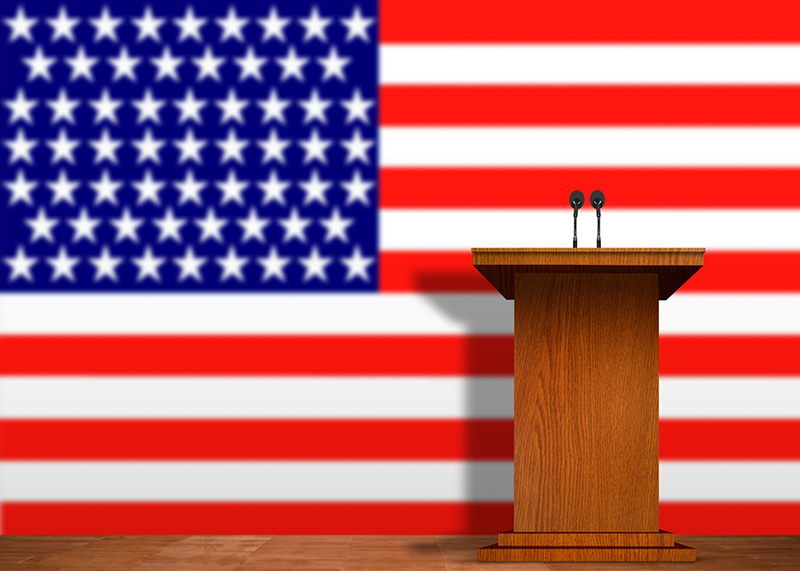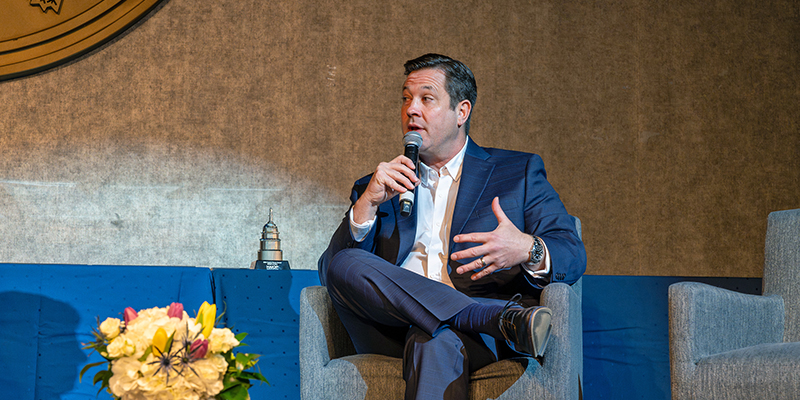Last week, the Democratic National Committee (DNC) concluded its political convention in Philadelphia, making history by nominating Hillary Clinton as the first woman nominee of either major political party. In doing so, the Democrats accomplished most, but not all, of their goals. Namely, the Clinton campaign and Democrats sought to (1) reinforce the image that GOP nominee Donald Trump was unfit to be president; (2) “humanize” Clinton, in political consultant parlance, by having validators attest to her personal qualities and leadership experience; and (3) unify the Democratic Party by bringing the supporters of Bernie Sanders into the Clinton camp. They were fairly successful on the first two goals, and less so on the third.
NAIOP staff was in attendance at the DNC event, as it was at the Republican National Convention (RNC). At the Democratic convention, the major national real estate organizations, including NAIOP, sponsored a policy discussion and webcast hosted by The Hill newspaper titled Real Estate and the U.S. Economy. Elected leaders participating on the various panels included Representatives Don Beyer (D-VA), Richard Neal (D-MA), Ed Perlmutter (D-CO) and John Delaney (D-MD), as well as Senator Ben Cardin (D-MD). Topics included prospects for comprehensive tax reform and future availability of capital and credit for real estate. A similar policy forum at the GOP convention was held. That event included participation by Representatives James Renacci (R-OH), Tom Reed (R-NY), Mike Turner (R-OH), French Hill (R-AR) and Bill Huizenga (R-MI).
While a good deal of policy was discussed at these events, we learned more about the what our elected leaders really believe will happen over the next few months in our private conversations with them and their staff. If the Republican Convention was “The Trump Show,” as noted in our July 19 blog post, then many the attendees described the Democratic gathering as a “check the boxes” convention, one that sought to address the perceived shortcomings of the Democratic nominee and lay the groundwork for party unity. In Cleveland, the GOP’s establishment leaders acknowledged their convention represented their taking a back seat to the insurgent, populist grassroots elements of the party, and to the individual demands of a professed outsider. In stark contrast, the Democratic convention represented that party’s establishment asserting control, and managing the convention with an eye toward co-opting the message of its insurgent wing on behalf of its nominee.
On the latter point, the Democrats began rather inauspiciously, with Sanders supporters being more vocal (some say rude) in their opposition to Clinton than had been anticipated, intensified by the release of internal DNC e-mails that showed a decided bias toward Clinton during the campaign. Sanders supporters loudly booed speakers whenever they mentioned Clinton’s name. The convention could have been a disaster if not for first lady Michelle Obama’s speech, which many observers credit with turning the evening around. In a rather ironic twist, the person who came in second for the Republican nomination, Texas Senator Ted Cruz, was roundly booed by the GOP delegates and his own supporters for failing to endorse the Republican nominee. At the Democratic convention, Sanders was booed by his own followers when he threw his support behind the Democratic nominee. The media spin was that Cruz and his self-serving speech was had a unifying effect on the Republican base for Trump. Sanders’ endorsement of Clinton, which was meant to unify the party, actually underscored the deep division that remains within the Democratic Party. However, by the end of the convention, much of the vocal opposition to Clinton had diminished, and elected Democrats were commenting in private that enough had been done to ensure that most Sanders voters would turn out for Clinton.
Clinton’s decisions have telegraphed her strategy of relying on the Obama coalition and counting on the Electoral College advantage enjoyed by Democrats in the most recent elections, notably her “safe” choice of Senator Tim Kaine (D-VA) as her running mate – according to the political pundits – and her methodical outreach to Bernie Sanders supporters, evidenced by adoption of policy positions favored by the progressive wing of the Democratic party. To win, Trump has to reshuffle the deck by winning states lost by Republicans.
At this point, the Clinton strategy may be the correct one to guarantee victory for the Democrats. However, it should be noted that this is the longest period between political conventions and the general election since the presidential election of 1960. In other words, there is a lot of time remaining for events that could change the trajectory of the race. Anyone who watched this year’s NCAA tournament knows that a lot can happen in the final stages of a contest to upend expectations, especially when one side is playing not to lose.














